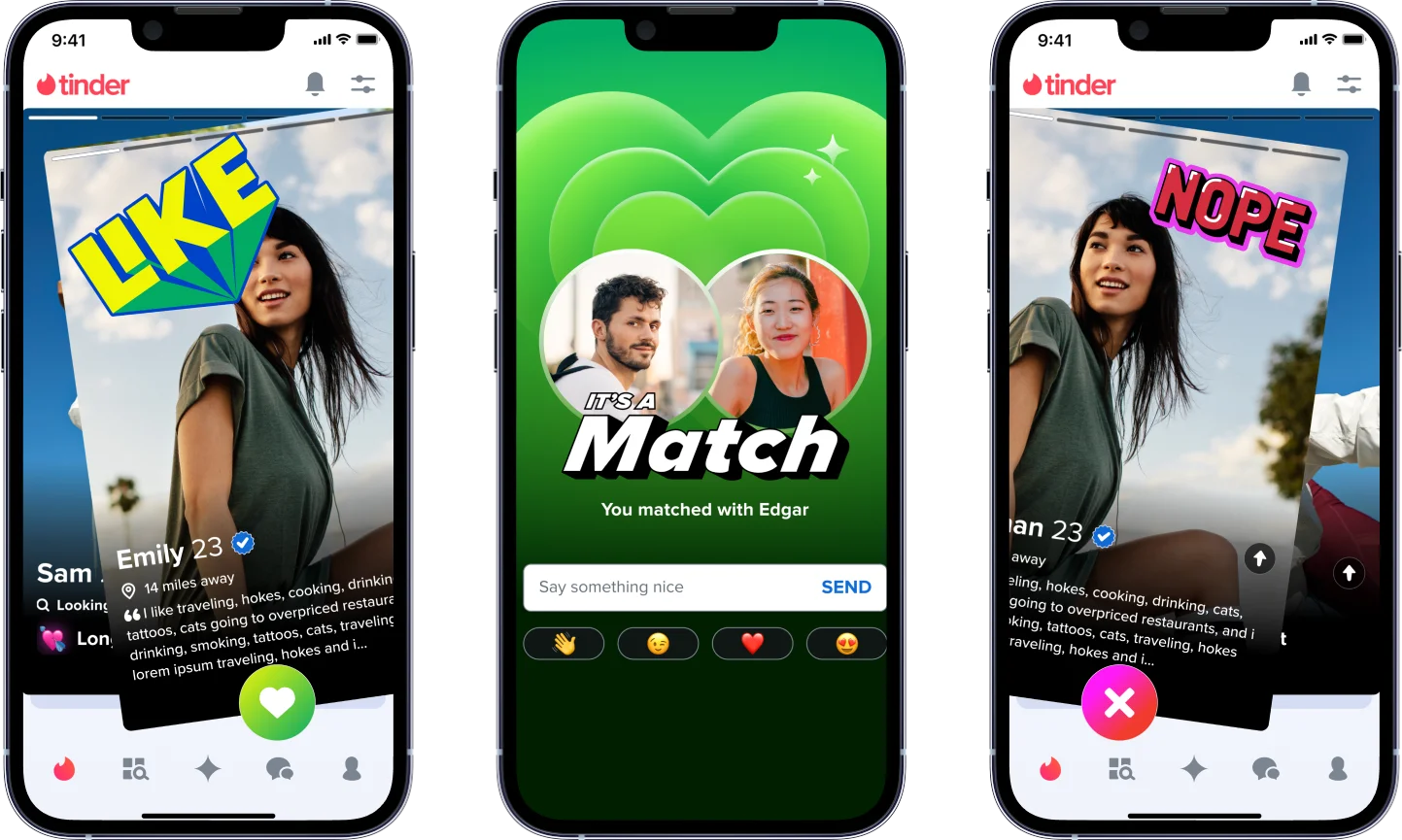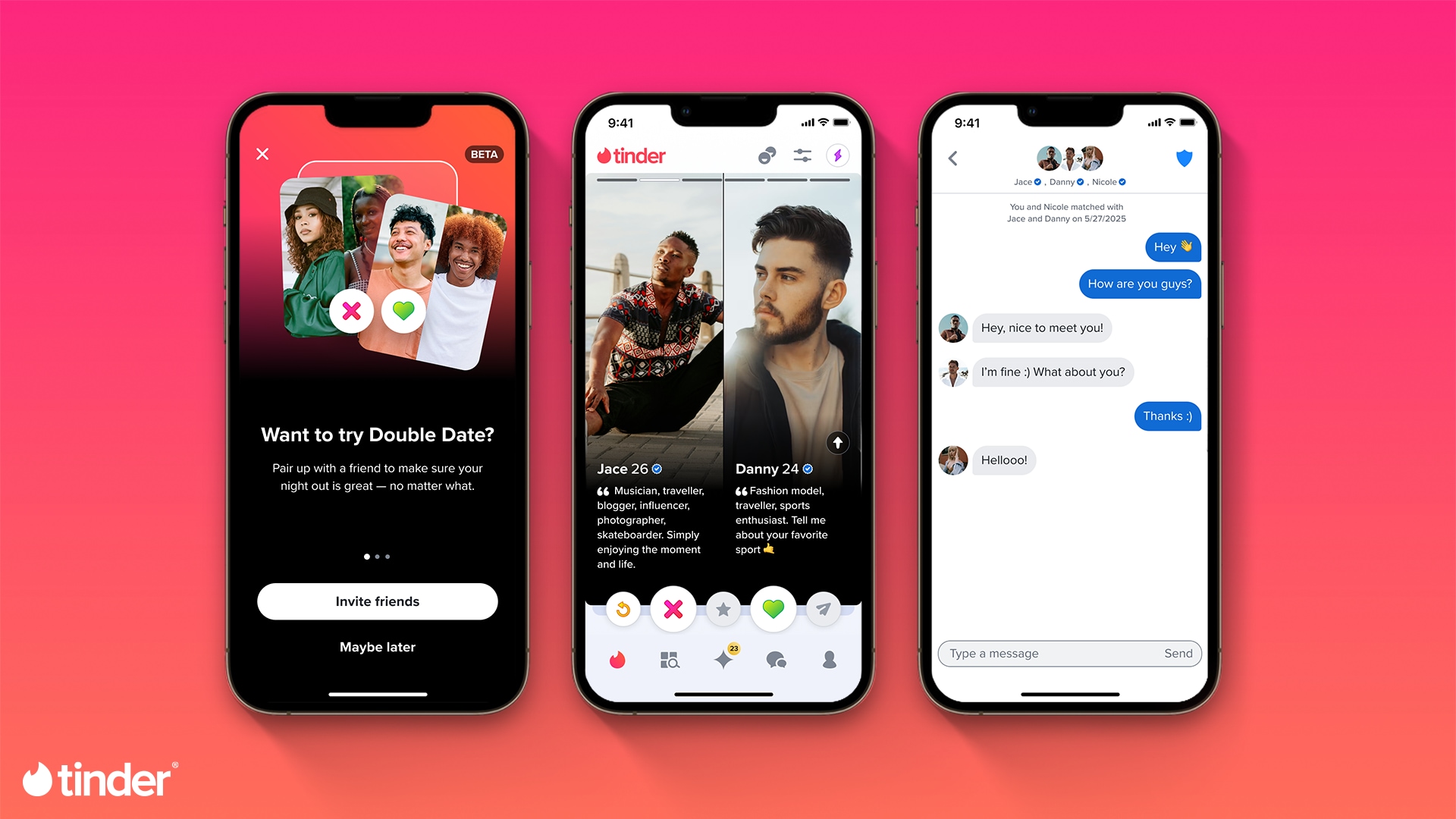Tinder has now made ID verification a rule of entry for new users in the United States from Tuesday, asking them to upload a short video selfie so that it can be matched to their profile pictures using human-assisted AI. The change comes after years of pushing dating companies to improve user safety, in part by cracking down on catfishing and frauds that have unnecessarily preyed on whole segments of the population who are looking for companionship.
What Tinder’s Face Check Requires From New Users
Called Face Check, the feature prompts first-time sign-ups to record themselves performing a short series of movements and facial expressions that Tinder processes using human-assisted AI technology to compare with their profile pictures. The system creates a three-dimensional model of each user’s face to check for likeness and liveness — something designed to prevent photos of screens, masks or A.I.-created faces.
- What Tinder’s Face Check Requires From New Users
- Privacy, data retention and how Tinder handles biometrics
- Early safety impact from Tinder’s mandatory Face Check
- Where Tinder’s Face Check rolls out next across the US
- How it compares to rival identity checks in dating apps
- What new Tinder users will find during selfie verification
- The bigger picture for Tinder’s trust and safety strategy

Profiles that have passed the first screening are given a verification badge, which has become a status symbol inside dating apps and can help make people appear more attractive and even seedier to potential mates. Tinder also employs the scan to identify duplicate accounts and possible impersonation by giving a heads-up when the same face is detected on more than one profile.
Privacy, data retention and how Tinder handles biometrics
Video selfies are removed after being reviewed, Tinder says, and a non-spoofable, authenticated, encrypted face model (read: not reversible) that maps the shape of your face is supposed to stick around on their servers to help verify subsequent photo uploads and future versions of others’ uploaded photos. (Microsoft frames it as a low-retention policy that safeguards biometric identifiers and increases security.)
Privacy advocates warn that biometric data, even if it is stored in encrypted form, carries long-term risk as a permanent record that cannot be reissued like a password. Groups including the Electronic Frontier Foundation have called on platforms to reduce storage, set out transparent retention periods and disclose how data might be shared with vendors or law enforcement. Tinder’s disclosures are focused around encryption and minimizing use; it will be interesting to see if users lean on further transparency reports.
Early safety impact from Tinder’s mandatory Face Check
Tinder says it has seen a major decline in bad behavior where Face Check is live, including large decreases in exposure to those individuals who are suspected as bad actors and far fewer user reports about them. The directional indicators from platform-reported metrics are difficult to confirm independently and may be the result of a combination of policy changes, but mesh with broader industry conclusions that verified profiles discourage low-effort scams.
The move comes as fraud continues to plague social platforms. The Federal Trade Commission has found that Americans lose more than a billion dollars annually to romance scams, far higher than the loss from any of the other common forms of online fraud. The F.B.I.’s Internet Crime Complaint Center also says that confidence and romance scams lead to some of the highest financial losses among online victims.
Where Tinder’s Face Check rolls out next across the US
Face Check is available nationwide in the US following its rollout to various places and countries. Tinder says more states will be added in phases. The company is also working to expand selfie verification across other services in its parent brand’s portfolio, indicating that a unified trust-and-safety strategy extends across the brands.

While current members may see prompts to verify in order to use various features, or even boost their profile visibility, however, the initial requirement is geared toward new accounts to increase the base level of trust right from account creation.
How it compares to rival identity checks in dating apps
Competitors have pursued similar checks. Bumble uses photo-based verification that requires users to recreate a pose, while Meta uses selfie-based identity tests to recover access to locked accounts. Tinder adopts a 3D face map and liveness detection, an approach that jibes with advice from standards organizations such as NIST for resisting spoofing.
More significant is the new requirement that, for new sign-ups, verification moves from optional to mandatory. Compulsory checks will place friction barriers at the point of sign-up, but they also make the platform less enticing to scammers who seek low-friction access for their victims.
What new Tinder users will find during selfie verification
Sign-up will now be a guided selfie video process. Good lighting, a neutral background and an unobstructed face increase approval chances. If verification is unsuccessful, users may try again with clearer footage or newer profile photos that more accurately represent what they look like today.
Members should continue to consider verification as one layer of safety, not a promise. In-app reporting tools, careful off-platform communication and doubt about money requests are still key. To anyone concerned about biometrics, Tinder says this: Verification is the price for admission to the network, and it’s turning you away if you refuse, though the company claims that data is secure and used only for security purposes.
The bigger picture for Tinder’s trust and safety strategy
Tinder has been grappling with churn from users who feel unsafe and have inconsistent experiences. A more stringent identity layer could help restore trust, increase match quality by removing fake or promoted profiles and perhaps add premium features that would prioritize users with verified identities. Whether it increases engagement and revenue will depend on execution, false-rejection rates and how clearly the company communicates privacy safeguards.
For an industry founded on trust and empowered by tech, the message is straightforward: the selfie is about to replace the ID card. If it significantly cuts down on fraud while respecting privacy, users might be convinced the extra box is worth swiping.

